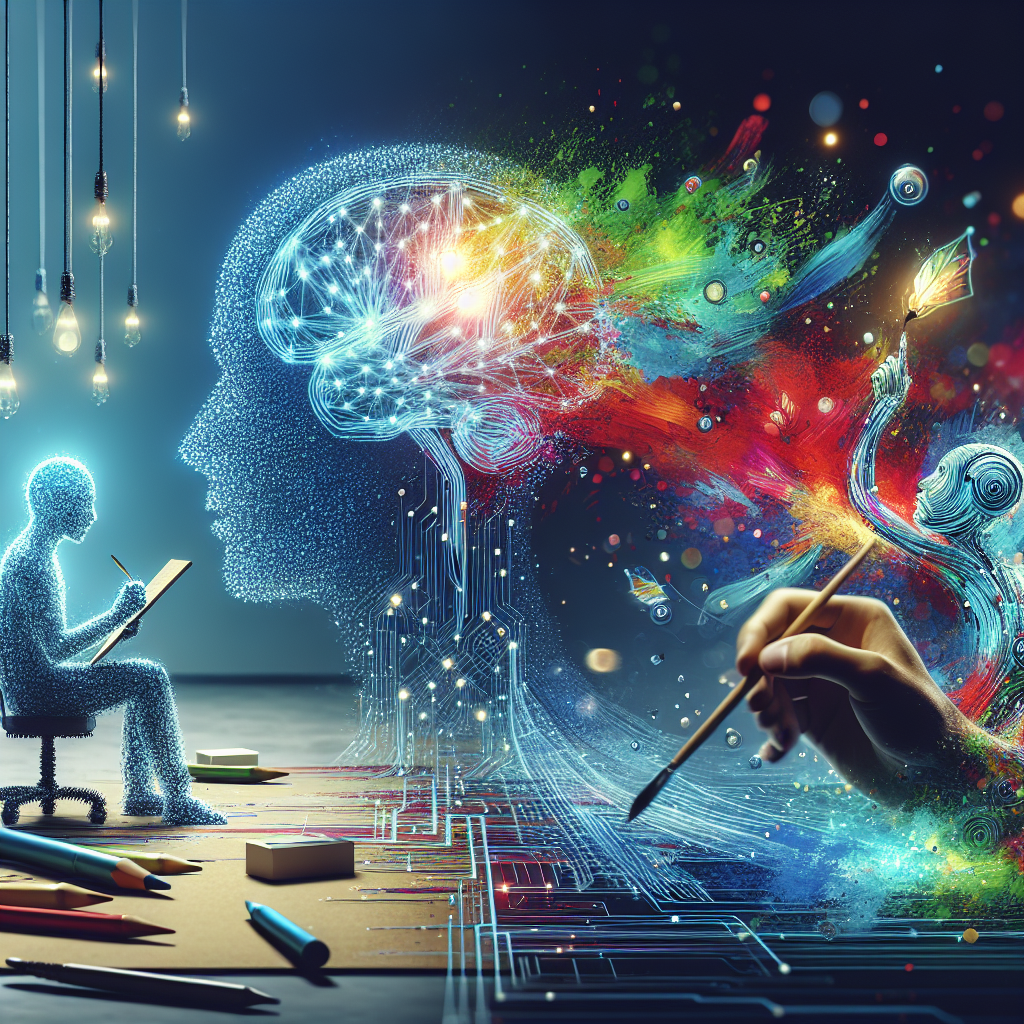Artificial Intelligence (AI) has revolutionized many aspects of our lives, from healthcare to transportation to entertainment. One area where AI is making a significant impact is in the realm of creativity. In the past, creativity was seen as a uniquely human trait, but AI is now being used to generate art, music, literature, and even design.
AI and Creativity: Fostering Innovation
One of the key ways that AI is fostering innovation in creativity is through the generation of new ideas and concepts. AI algorithms are able to analyze massive amounts of data and identify patterns and trends that humans may not be able to see. This can lead to the creation of new and unique ideas that may not have been possible without the help of AI.
For example, in the field of music, AI algorithms are being used to compose original pieces of music. These algorithms can analyze existing music and identify common patterns and structures, which can then be used to generate new compositions. This has the potential to revolutionize the music industry, allowing for the creation of new and unique music that may not have been possible before.
AI is also being used in the field of art to generate new and unique pieces of art. AI algorithms can analyze existing works of art and identify common themes and styles, which can then be used to generate new art pieces. This has the potential to democratize the art world, allowing for a wider range of artists to create and share their work.
In the field of literature, AI algorithms are being used to generate new stories and poems. These algorithms can analyze existing works of literature and identify common themes and structures, which can then be used to generate new stories and poems. This has the potential to revolutionize the publishing industry, allowing for a wider range of stories and poems to be published.
Overall, AI is fostering innovation in creativity by allowing for the generation of new and unique ideas and concepts that may not have been possible before. This has the potential to revolutionize many industries, from music to art to literature, and allow for a wider range of creativity to flourish.
AI and Creativity: Fostering Collaboration
In addition to fostering innovation, AI is also fostering collaboration in the field of creativity. AI algorithms are able to analyze data from multiple sources and identify common themes and trends. This can help to bring together artists, musicians, writers, and designers from around the world to collaborate on projects.
For example, in the field of music, AI algorithms can analyze data from multiple musicians and identify common themes and styles. This can help musicians to collaborate on new projects and create music that is truly unique and innovative. AI can also be used to analyze data from multiple artists and designers to identify common themes and styles, helping to foster collaboration in the field of art and design.
AI can also be used to help facilitate collaboration between different industries. For example, AI algorithms can analyze data from the music industry and the fashion industry to identify common themes and trends. This can help musicians and fashion designers to collaborate on projects that combine music and fashion in new and innovative ways.
Overall, AI is fostering collaboration in the field of creativity by helping to bring together artists, musicians, writers, and designers from around the world to collaborate on projects. This has the potential to create new and innovative works of art, music, literature, and design that may not have been possible before.
FAQs
Q: Can AI really be creative?
A: While AI algorithms are not capable of experiencing emotions or having original thoughts in the same way that humans do, they are able to generate new and unique ideas and concepts based on the data that they are trained on. This can lead to the creation of art, music, literature, and design that is truly innovative and creative.
Q: Is AI taking jobs away from creative professionals?
A: While AI is changing the way that creative professionals work, it is not necessarily taking jobs away from them. Instead, AI is being used to augment the creativity of professionals in fields such as music, art, literature, and design, helping them to generate new and unique ideas and concepts that may not have been possible before.
Q: How can I get started with AI in creativity?
A: There are many resources available for those who are interested in getting started with AI in creativity. Online courses and tutorials can help you learn the basics of AI algorithms and how they can be used in creative fields. Additionally, there are many tools and platforms available that can help you get started with AI in creativity, such as machine learning libraries and creative AI software.
In conclusion, AI is revolutionizing creativity by fostering innovation and collaboration in fields such as music, art, literature, and design. While AI algorithms may not be capable of experiencing emotions or having original thoughts in the same way that humans do, they are able to generate new and unique ideas and concepts based on the data that they are trained on. This has the potential to revolutionize many industries and allow for a wider range of creativity to flourish.

